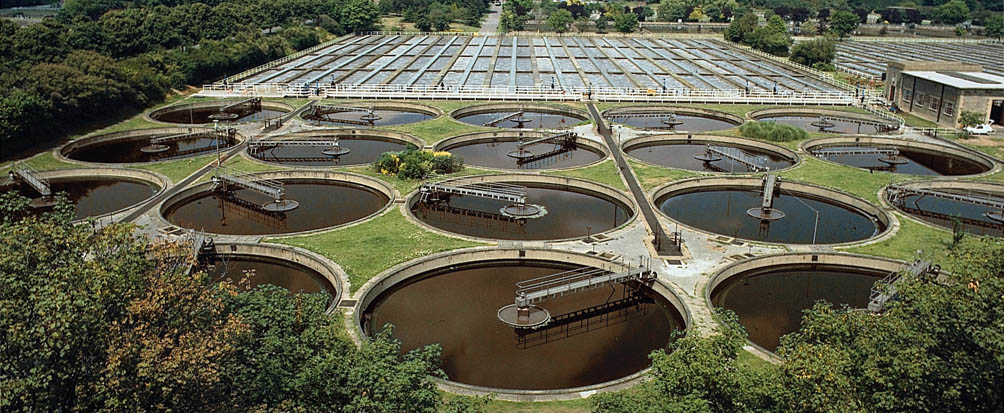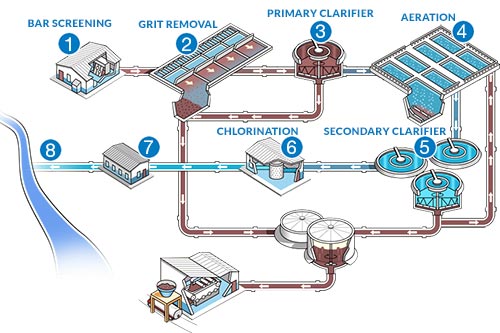Steps to Reduce Your Footprint with Proper Wastewater Disposal
Wiki Article
Understanding Wastewater Treatment Processes and Their Ecological Effect
The details of wastewater therapy procedures play an essential duty in mitigating ecological difficulties connected with water pollution. Each phase, from preliminary to advanced treatments, is made to resolve specific impurities, inevitably protecting both public health and wellness and marine ecological communities. In spite of technical advancements in therapy efficiency, substantial obstacles continue, consisting of the administration of recurring contaminants and the ramifications of nutrient overflow. As we discover the complexities of these processes, it ends up being necessary to wonder about just how much current methods can advance to fulfill the expanding needs of sustainability and ecological conservation.Review of Wastewater Treatment
How is wastewater transformed right into a safe source for the setting? Wastewater therapy is a vital procedure designed to eliminate pollutants from utilized water, thereby safeguarding public health and safeguarding ecosystems. This procedure starts with the collection of wastewater from property, commercial, and industrial resources, which is after that directed to treatment centers.At these centers, various physical, chemical, and biological techniques are employed to treat the wastewater. Consequently, biological treatments, such as triggered sludge processes, use microbes to damage down natural issue.
The dealt with effluent can be securely discharged right into natural water bodies or reused for irrigation and industrial purposes, promoting resource conservation. Additionally, the therapy procedure generates biosolids, which can be repurposed as fertilizers or dirt modifications, even more boosting sustainability.
Stages of Therapy Procedures
The wastewater therapy process generally includes 3 key phases: initial, key, and second therapy. Each phase offers an unique role in reducing the pollutant tons and making certain the effluent fulfills ecological requirements before discharge.
The primary therapy stage concentrates on the physical splitting up of suspended solids from the wastewater. Via sedimentation, larger bits settle at the end of sedimentation containers, developing sludge, while lighter products, such as oils and greases, float to the surface area and are skimmed. This process substantially lowers the natural and inorganic lots in the wastewater.
Second therapy is an organic procedure focused on more reducing the concentration of organic matter. Various approaches, including triggered sludge systems and trickling filters, make use of microbes to metabolize organic contaminants. This phase is crucial for attaining the required biochemical oxygen need (BODY) decrease, ultimately resulting in cleaner effluent ready for discharge or further therapy. Each stage is essential in protecting like this ecological and public wellness.

Advanced Treatment Technologies
Complying with the additional treatment processes, progressed therapy innovations play an essential role in additional improving the top quality of treated wastewater. These modern technologies are developed to get rid of recurring pollutants that are not properly removed during primary and additional treatments, making sure the effluent fulfills stringent governing criteria.Amongst the extensively made use of innovative treatment techniques are membrane layer purification, reverse osmosis, and progressed oxidation procedures. Membrane layer purification, including microfiltration and ultrafiltration, is efficient in dividing great particles, pathogens, and colloids from the water (Wastewater). Reverse osmosis utilizes semi-permeable membranes to eliminate dissolved solids, resulting in premium water appropriate for numerous applications
Advanced oxidation procedures (AOPs) utilize strong oxidants to deteriorate organic toxins, including drugs and personal care products that are resistant to standard therapy. These approaches enhance the biodegradability of complex compounds, promoting their elimination.
One more substantial technology is the usage of organic nutrient removal procedures, which especially target nitrogen and phosphorus, stopping eutrophication in obtaining water bodies. Generally, sophisticated treatment innovations are important for attaining higher levels of purification, advertising water reuse, and protecting public health while dealing with the challenges connected with wastewater monitoring.
Environmental Benefits of Treatment
Numerous ecological benefits arise from reliable wastewater therapy processes that contribute to ecosystem health and wellness and sustainability. Mostly, these processes substantially reduce the release of harmful contaminants right into natural water bodies, which assists maintain marine ecosystems. By getting rid of impurities such as hefty steels, nutrients, and virus, treated wastewater mitigates this post the risk of waterborne conditions and advertises biodiversity in aquatic atmospheres.Furthermore, wastewater treatment centers usually utilize sophisticated technologies that enable water recycling and reuse. This technique not only preserves freshwater sources yet likewise reduces the need on natural water supplies. Boosted nutrient removal from wastewater can also avoid eutrophication, a process that leads to algal blooms and succeeding oxygen deficiency in aquatic systems.
Furthermore, effective treatment processes can minimize greenhouse gas emissions, particularly methane and nitrous oxide, which are often launched during without treatment wastewater decay. By catching and making use of biogas from anaerobic digesters, centers can convert waste into renewable resource, consequently contributing to a reduction in nonrenewable fuel source dependence.
Obstacles and Future Fads
While the environmental benefits of wastewater therapy are clear, numerous obstacles persist that impede optimal end results in this field. One significant concern is maturing framework, which frequently results in ineffectiveness and increased functional costs - Wastewater. Numerous treatment plants were made decades back, and their capabilities do not align with modern-day needs, that include stricter governing criteria and higher quantities of wastewater as a result of urbanization
Looking in advance, there is an expanding focus on source healing and circular economy concepts within wastewater treatment. Developments such as anaerobic food digestion, which can create biogas, and advanced purification innovations are acquiring grip. These techniques not only boost treatment performance however also advertise sustainability.
Ultimately, resolving these challenges calls for collaboration amongst stakeholders, investment in modern technology, and a commitment to recurring research study. By welcoming these patterns, the wastewater therapy industry can advance to meet the needs of a changing setting and society.
Final Thought
In conclusion, wastewater treatment procedures play a vital duty in improving environmental quality and public health and wellness. The multi-stage therapy framework, combined with advanced technologies, properly mitigates air pollution and advertises lasting water monitoring.Report this wiki page